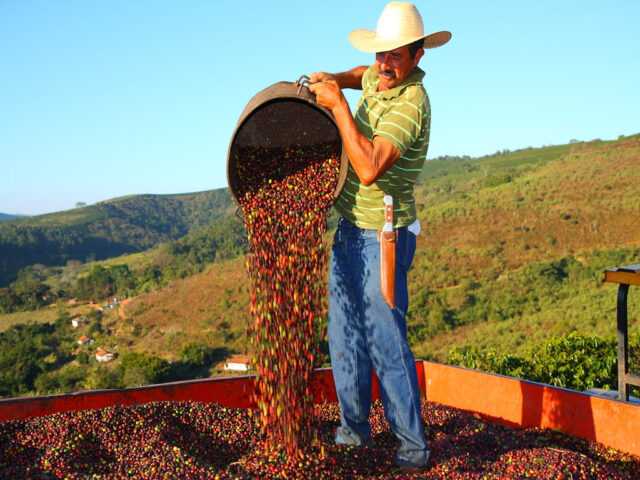SAO PAULO, Brazil — The firm weather in June contributed for a fast harvesting pace for the Brazilian 2019-20 coffee crop, mainly robusta, which stepped up in all of the regions surveyed by Cepea.
In Espírito Santo, the biggest robusta-producing state in Brazil, the volume harvested has reached from 65 to 75% of the expected production. If the weather continues favorable, Cepea collaborators believe activities may end until mid-July.
In Rondônia, activities advanced more. While in some regions fieldwork was almost finished by late June, in others, it had surpassed 80%.
Due to the harvesting of late beans, agents believe that activities should end in July. Quality, coffee sieve and the amount of damaged beans are similar to that in the 2018-19 crop.
Arabica
The arabica harvesting started to step up in the second fortnight of June, favored by the firm weather. In northwestern Paraná, activities had reached 50% of the total expected, and in Garça (SP), the harvesting had totaled from 40 to 50% of the area until late June. Yield at processing was lower than the expected in almost all regions, which may lead to a major crop failure in 2019/20.
Prices
The Brazilian markets of arabica and robusta coffee were calm in June. Late in the month, however, arabica prices rose sharply, boosted by the significant price rises in the international market as well as the US dollar appreciation against Real.
From June 24 to 25, the CEPEA/ESALQ Index for arabica coffee type 6 (delivered in São Paulo) increased a staggering 13.39 BRL per bag (3.2%). According to Cepea collaborators, in that scenario, agents were more active in the market and more deals were closed.
On June 28, the CEPEA/ESALQ Index for arabica coffee type 6 (delivered in São Paulo) closed at 434.39 BRL per 60-kilo bag (113.24 USD), 4% up compared to that on May 31. As for robusta, the CEPEA/ESALQ Index for the robusta type 6, screen 13, Espírito Santo State, closed at 294.22 BRL/bag (76.7 USD), 1.71% down in the same comparison.


















